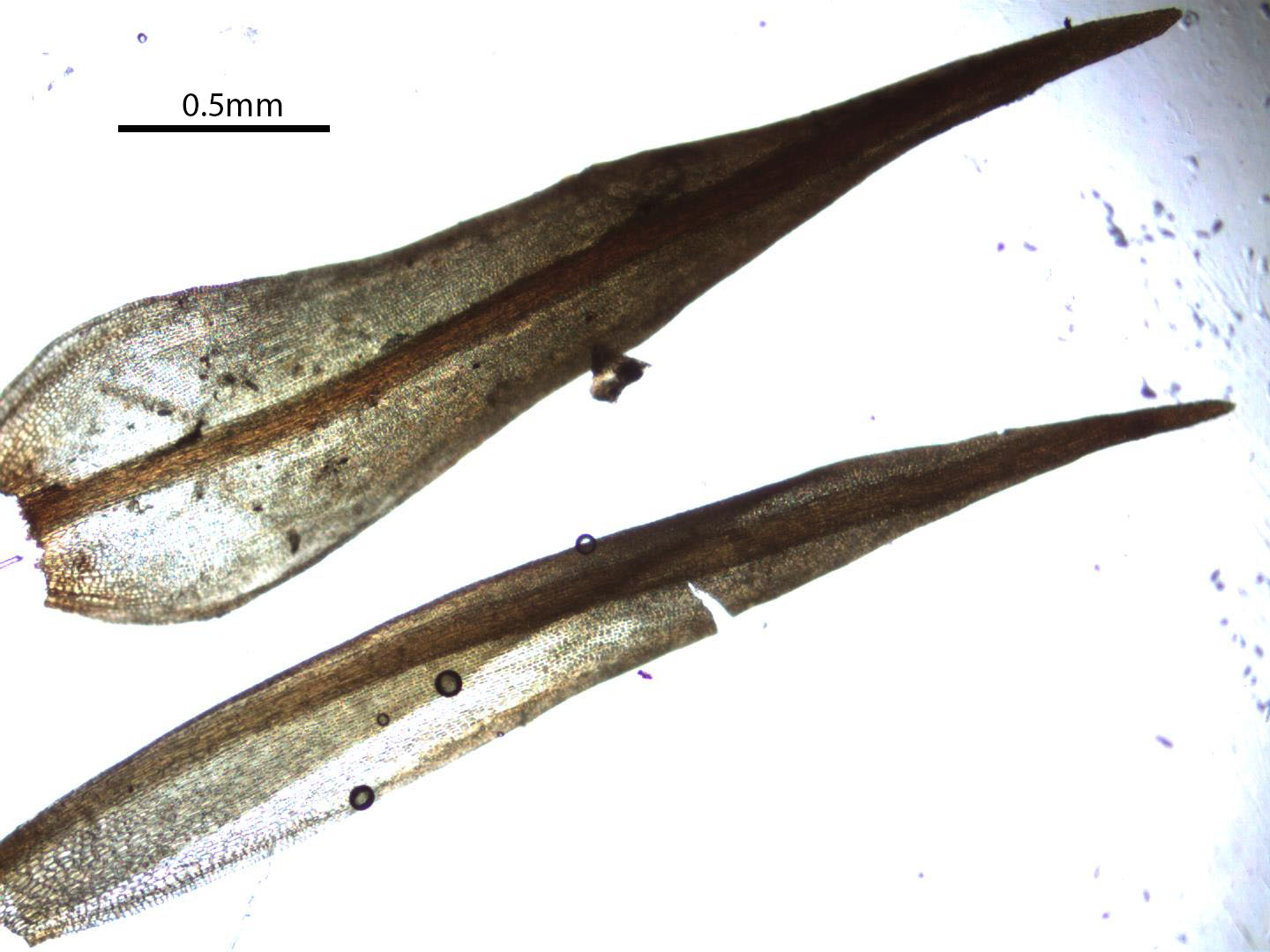 s
s
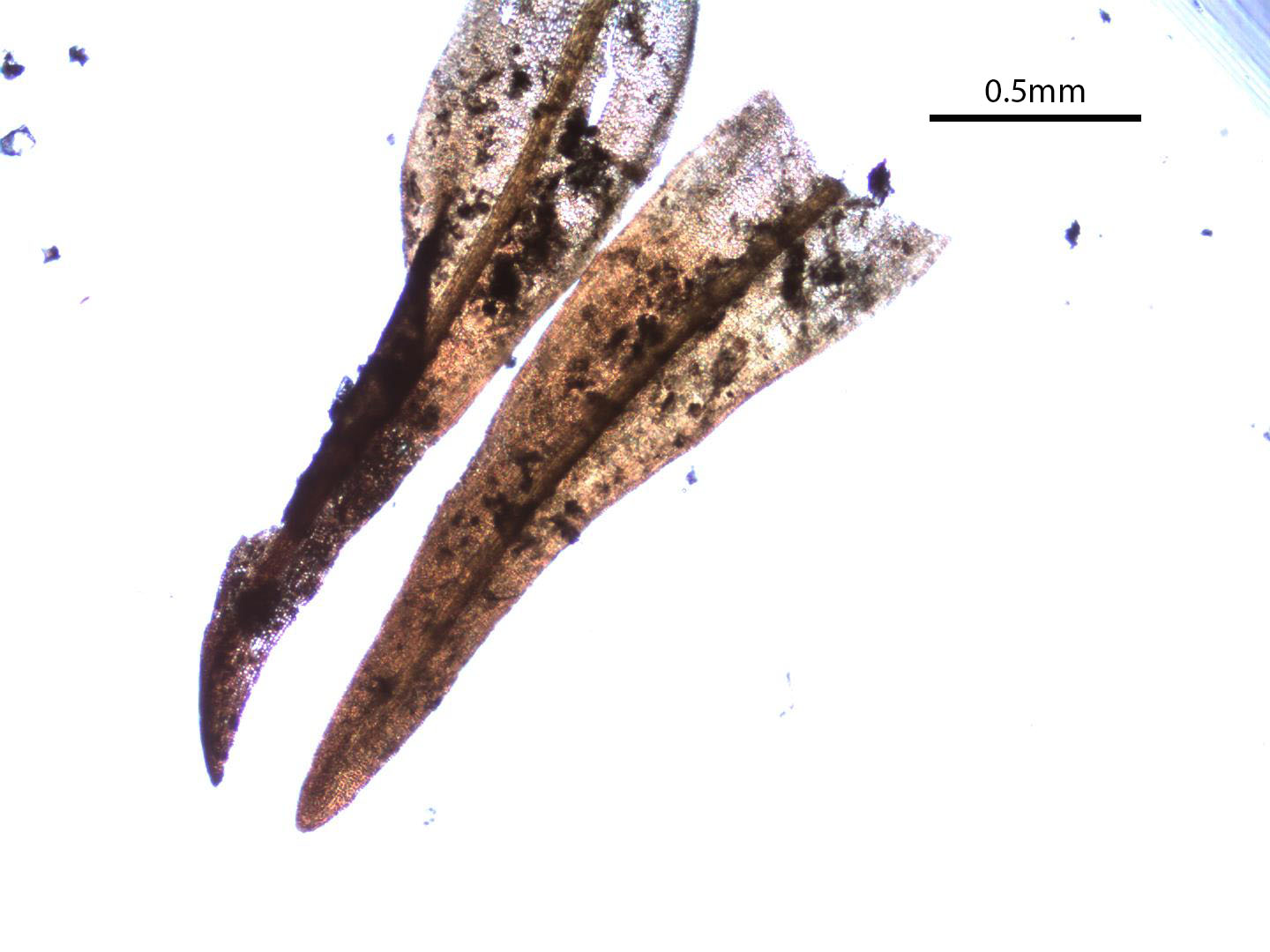
By Daniel K. Palmer, Adam H. Cerda, and Paul Wilson
Department of Biology, California State University, Northridge, CA 91330-8303
paul.wilson@csun.edu
Schistidium has frequently been considered to be merely an infrageneric category within Grimmia. We have discussed distinction of the two genera in the section on Grimmia. Species of Schistidium tend to occupy different ecological sites from those of Grimmia. Schistidium is most common on rock outcrops in areas of occasional submergence. It is especially common in sheet drainage areas over rock outcrops. Most often Schistidium can be found with capsules if one looks carefully in the field. The glossy red urns of the sporophytes of most Schistidium are quite obvious when one looks at moist plants. Species that sparingly produce sporophytes will often have those sporophytes on plants on the downhill edge of the clone. Sterile material thought to be Schistidium might probably be keyed both in the Schistidium and in the Grimmia keys. Recent work by Hans Blom has been invaluable in our understanding of Schistidium. Monographic study of California Schistidium would be a worthwhile enterprise.
Mosses treated in this section are blackish acrocarps usually with a reddish blush. The lanceolate to ovate-lanceolate leaves may or may not have an hyaline awn. Most species have a rather large number of quadrate cells in the alar region, and they often lack the transverse wall thickening of the basal marginal cells, a feature of many species of Grimmia as well. The definitive feature is the immersed and systylious capsules, the latter feature is never present in Grimmia. In most Schictidium species, the columella is attached to the opercullum and thus will fall off when the opercullum falls. In all Grimmia species, the columella is not attached to the opercullum and will remain intact after the opercullum falls off.
Literature sited
1. Flora of North America, Schistidium entry by Terry T. McIntosh.
2. Two new species of Schistidium (Grimmiaceae, Bryophyta) from western North America article by Terry T. McIntosh, Hans H. Blom, David R. Toren, and James R. Shevok
A. Leaves at least in the lower portion of stem typically more than 4:1 or plants large (leaves ≥ 0.3 mm wide [need to verify]) .....B A' Lamina typically shorter (except perichaetial leaves) and plant size typically smaller .....J
 s s
|

|
| Schistidium maritimum whole leaf mount (Wilson 155) | Schistidium agassizii whole leaf mount (Wilson 416) |
B. Plants occasionally washed by salt spray of the ocean; not adaxially grooved or with sinuose rectangular cells on adaxial surface; costa cross-section exhibiting a strong abaxial stereid band .....S. maritimum B' Plants found away from immediate maritime rocks; costa cross-section without stereid bands .....C
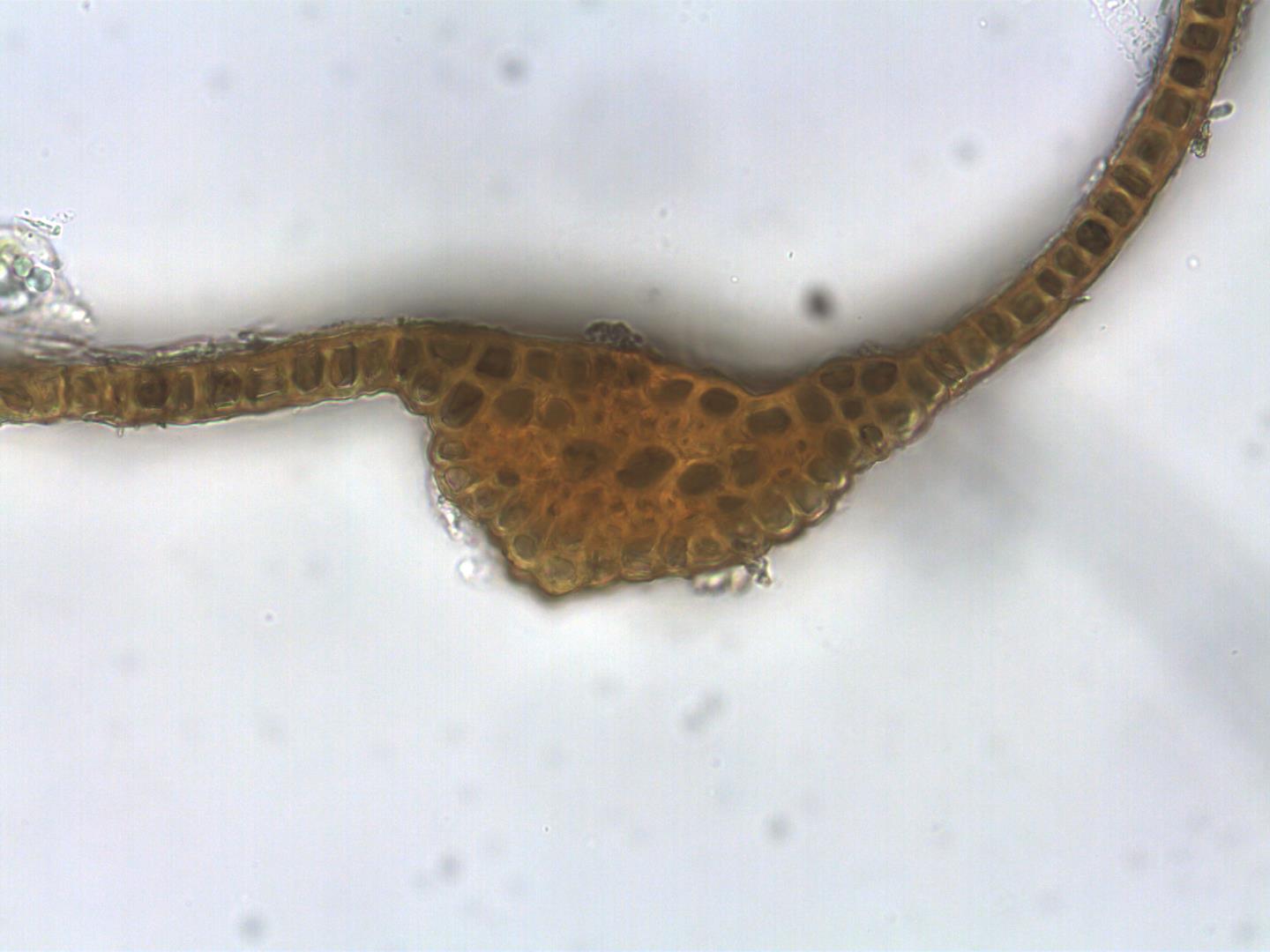
|
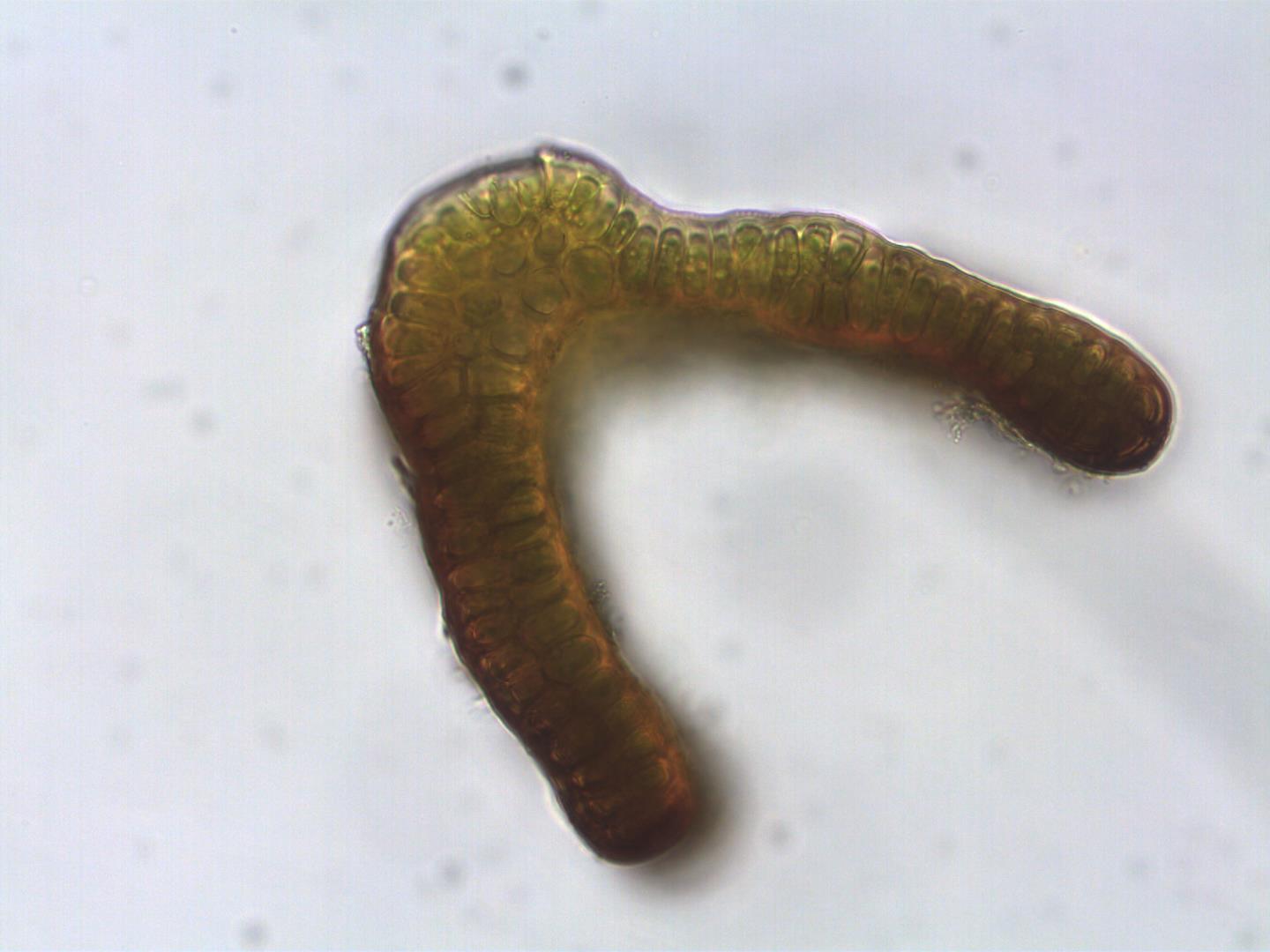
|
| Schistidium maritimum Trans cut focusing on stereid band (Silver 902) | Schistidium squarrosum Trans cut with no stereid band (Wilson 4346) |
C. Cells papillose especially on adaxial surface ..... S. strictum ? papillosum ? Not reported from California C' Cells smooth .....D
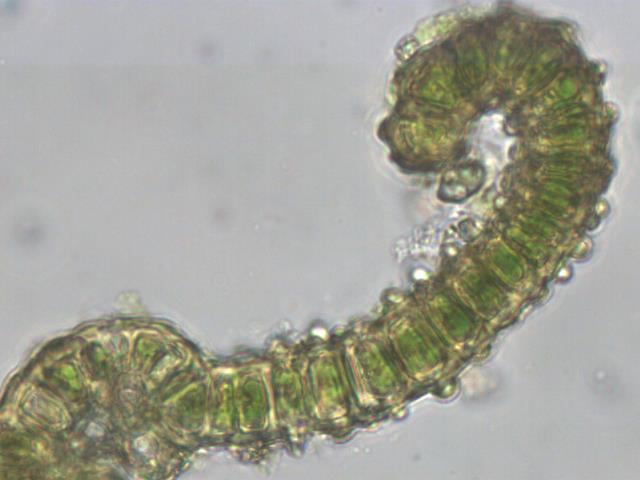
|
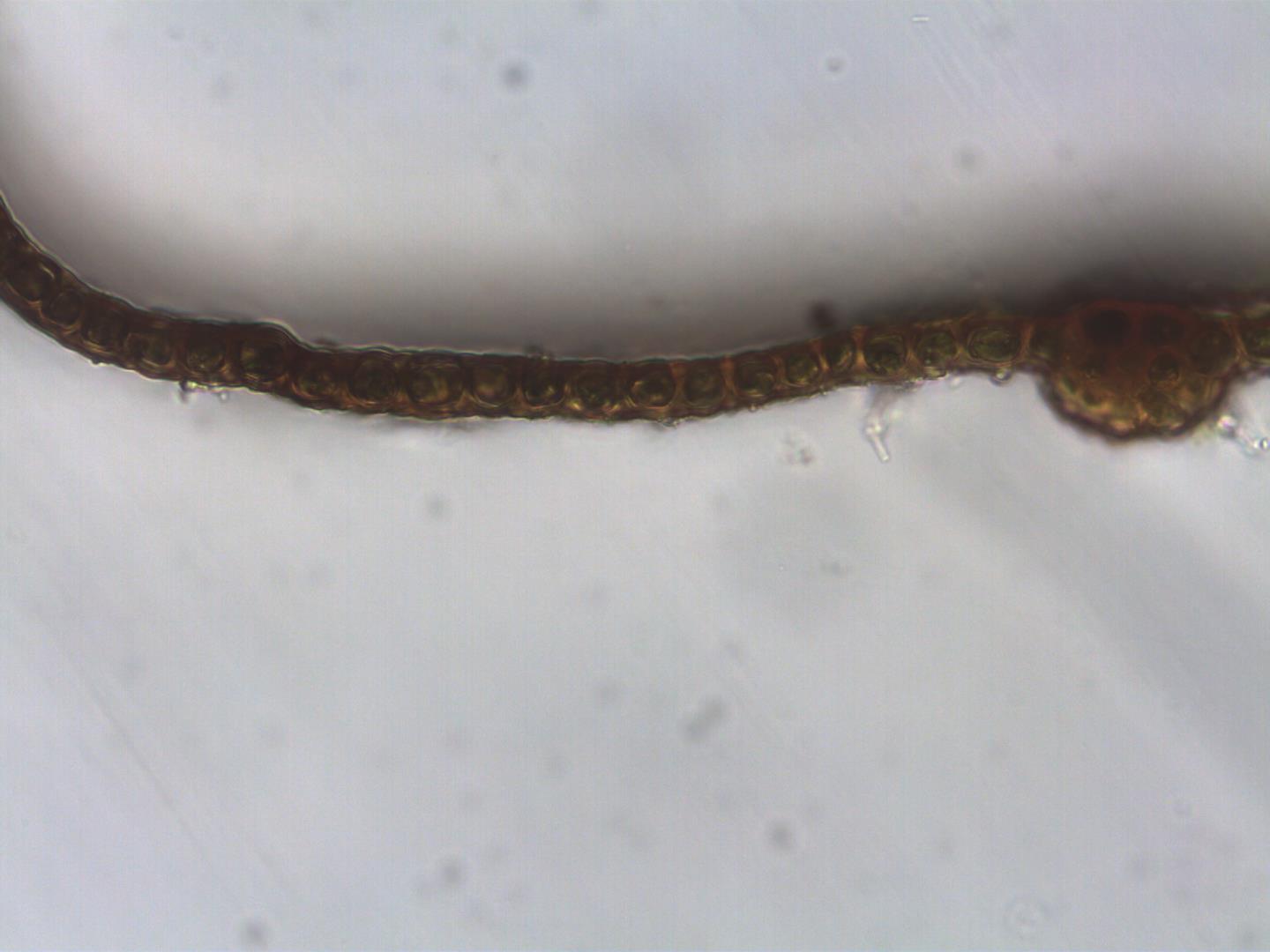
|
| Schistidium unknown with papillose cells (Coleman 1669) | Schistidium occidentale trans cut without papillose cells (Shevock 19826) |
D. Hyaline awn mostly found on some of the perichaetial leaves, only occasionally on vegetative leaves; plant when moist with leaves ascending to erect-ascending .....Schistidium confertum D'. Plant with awns either on both perichaetial leaves and vegitative leaves or no awns present .....E
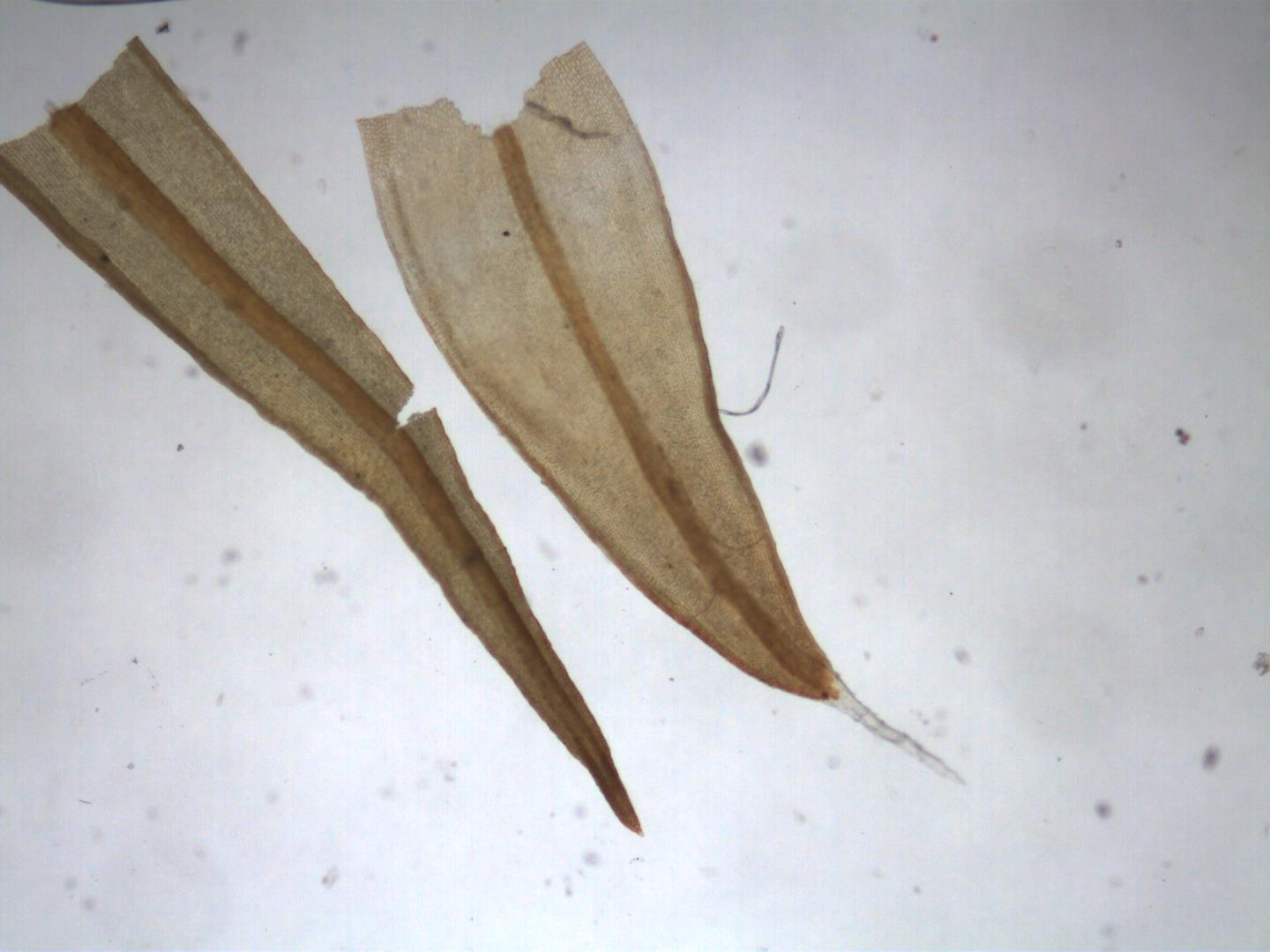
|
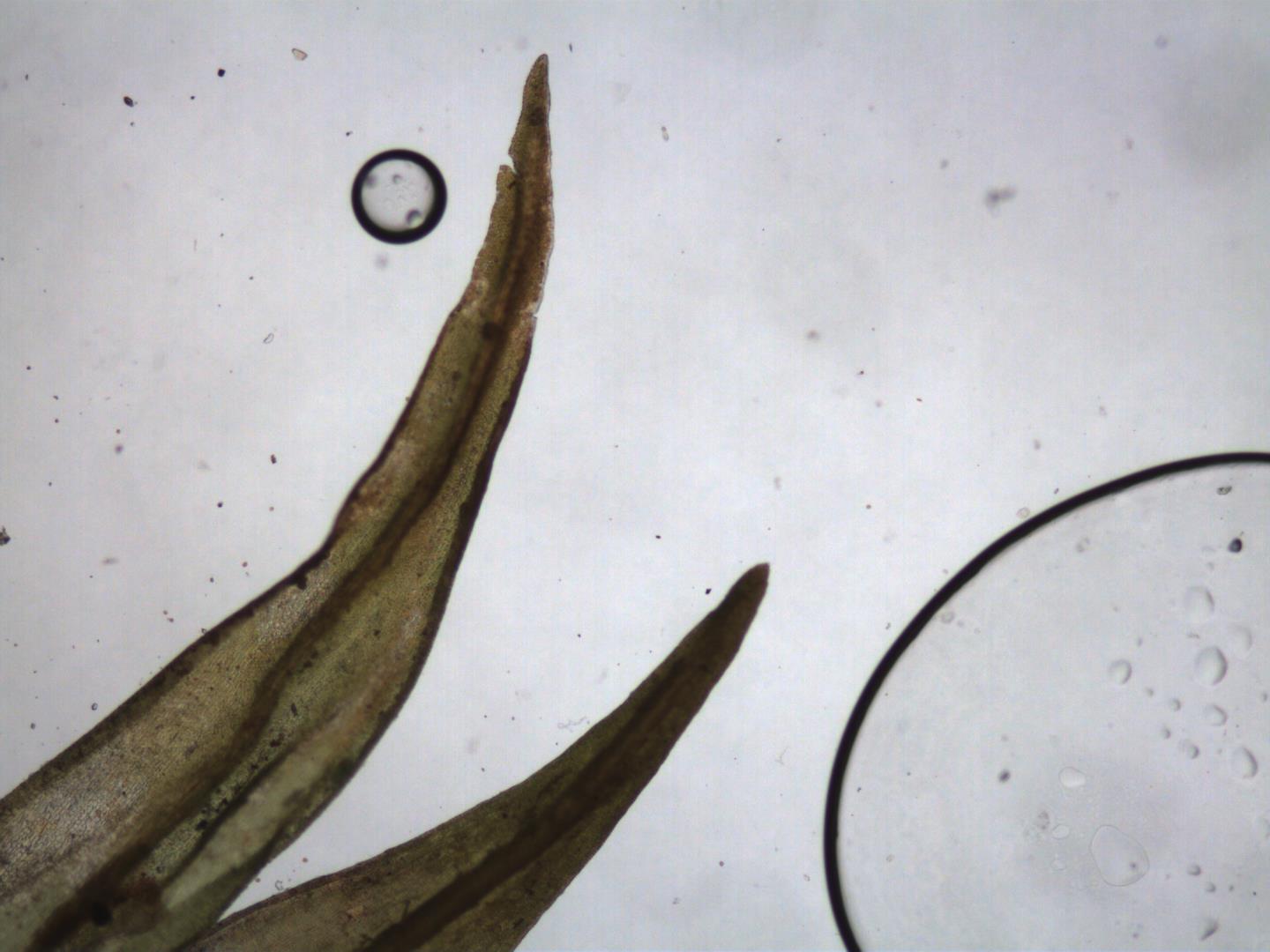
|
| Schistidium confertum with awned perichaetial leaves (right) and awned vegitative leaf (left) (Norris 70523) | Schistidium splendens perichaetial leaf (Left) and vegitative leaf (right) with no awns present. (Coleman 1667) |
E. Peristome absent or present as irregularly truncate segments .....Schistidium flaccidum E. Peristome present and well developed .....F

|
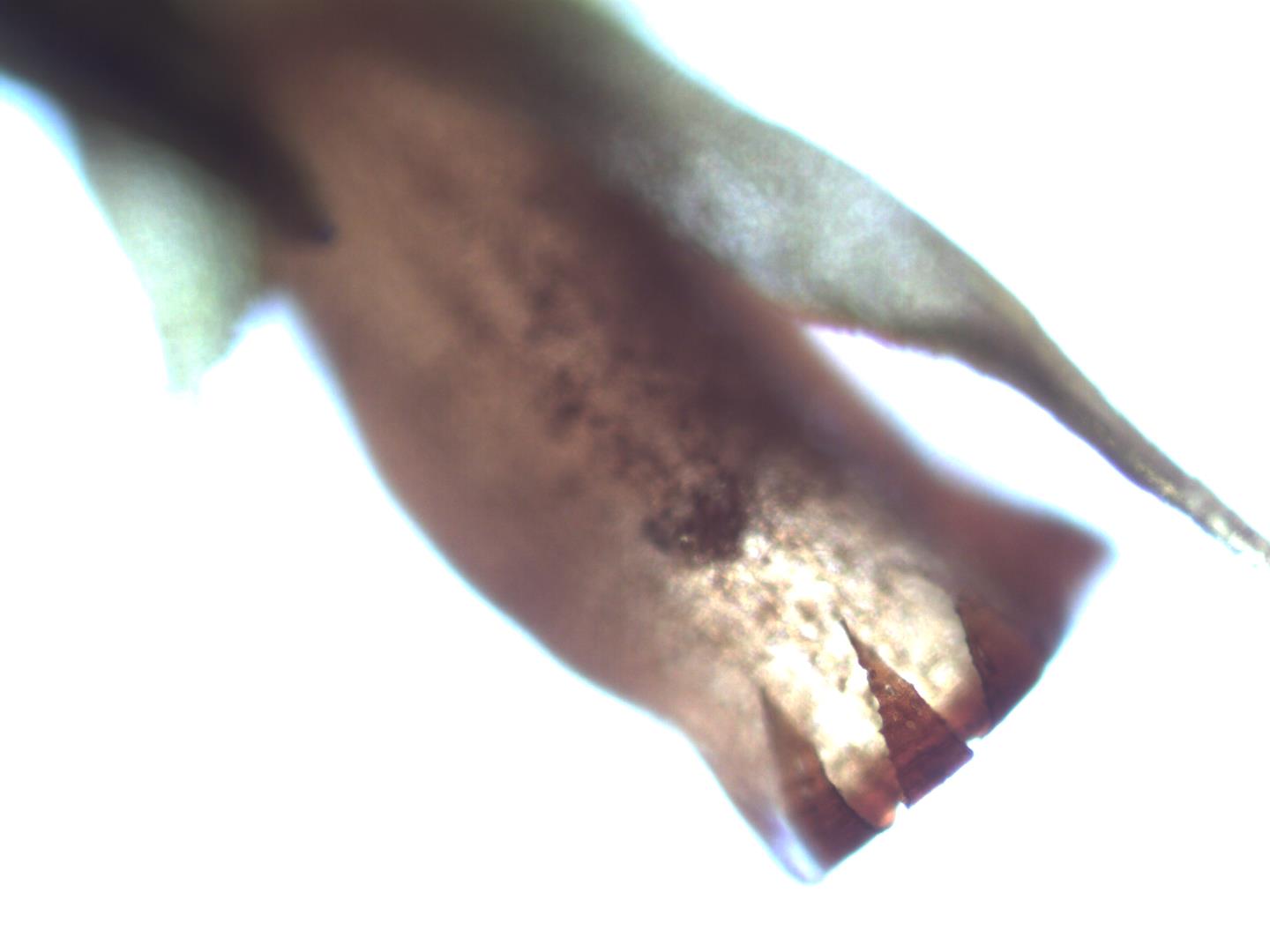
|
| Schistidium no specimen | Schistidium squarrosum capsule and peristome visible (Coleman 1667) |
F. Vegetative leaves mostly more than 1.5 mm long with the perichaetial leaves exceeding 3 mm long; peristome teeth deep red, not or very little cribrose; transverse walls of basal marginal cells not thickened ..... Schistidium splendens F'. Vegetative leaves and perichaetial leaves smaller; peristome teeth pale- or bleached red-brown, strongly cribrose; transverse walls of basal marginal cells markedly thicker than the lateral walls .....G
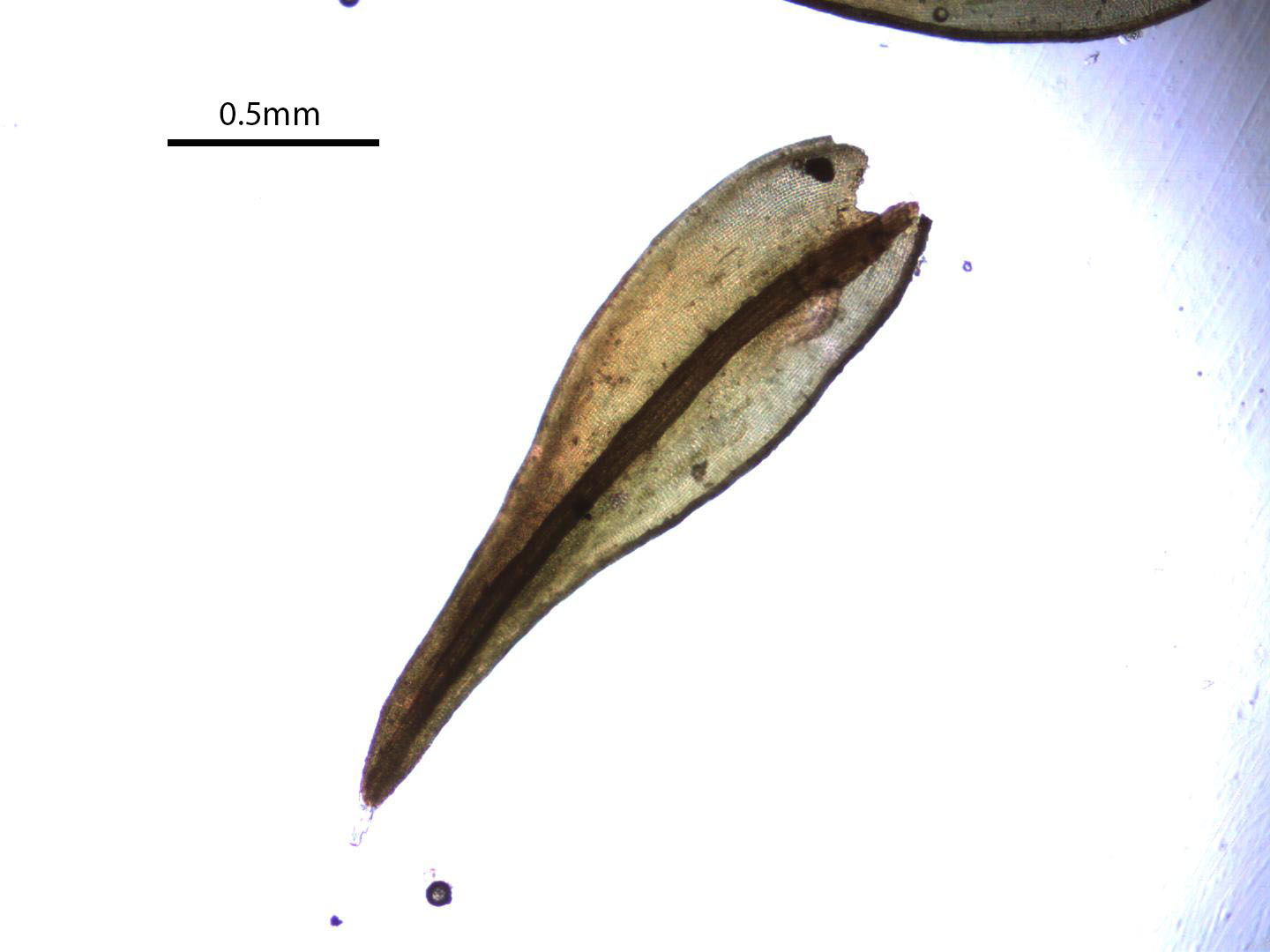
|
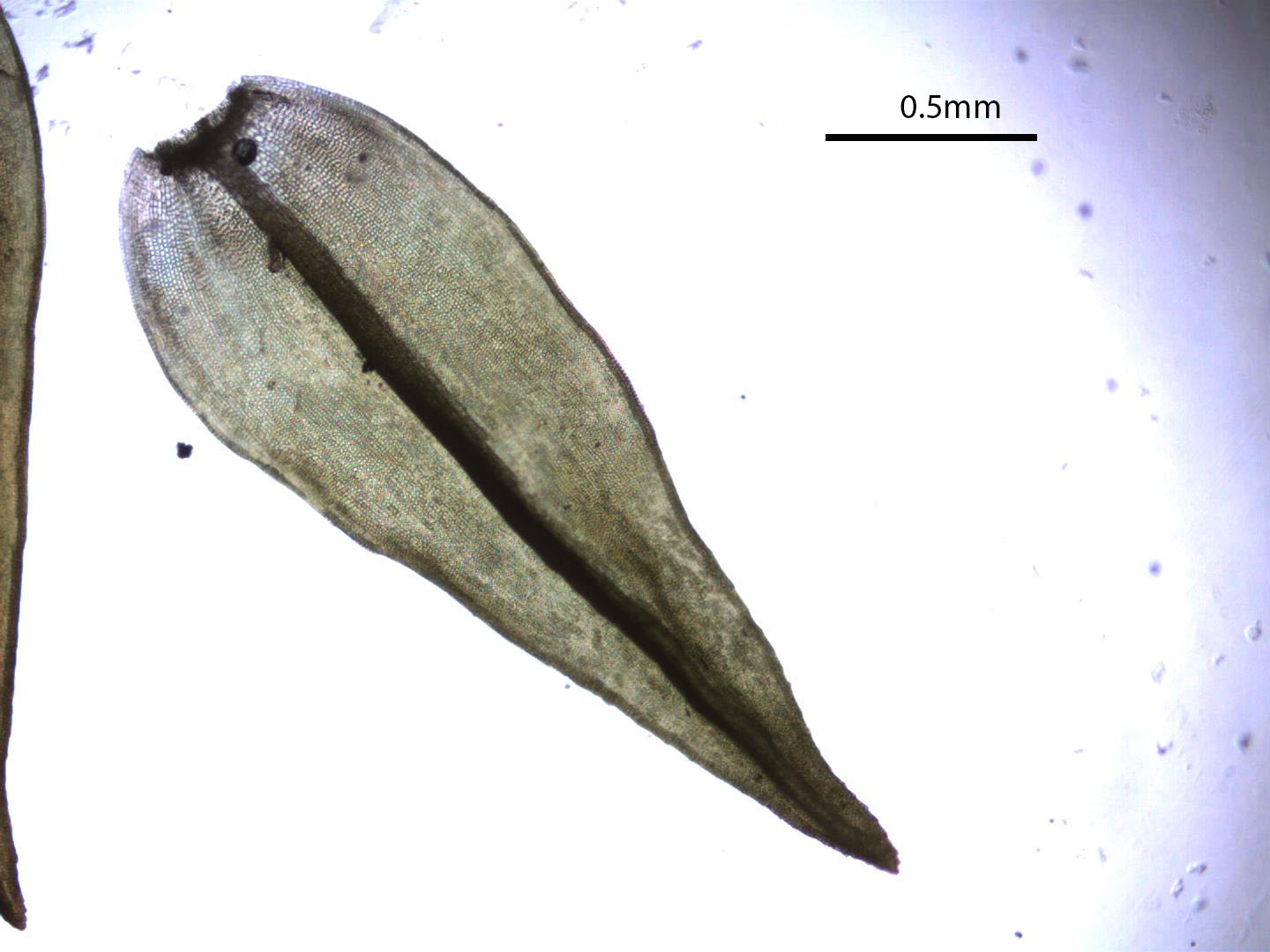
|
| Schistidium splendens Whole leaf mount (Coleman 1667) | Schistidium rivulare whole leaf mount (Wilson 5137) |
G. Margins of tip of leaf with tiny teeth due to ends of walls being knobby; apex of leaf not hyaline; capsules short with widest point near the mouth; along large streams ..... S. rivulare (Flora of North Am lists S. platyphyllum as = S. rivulare) G' Margins of lamina entire (sometimes with a short hyaline awn that has teeth formed by knobby end-walls); capsule urn twice as long as wide with widest point near 2/3rds; usually in seasonally dry rivulets ..... H
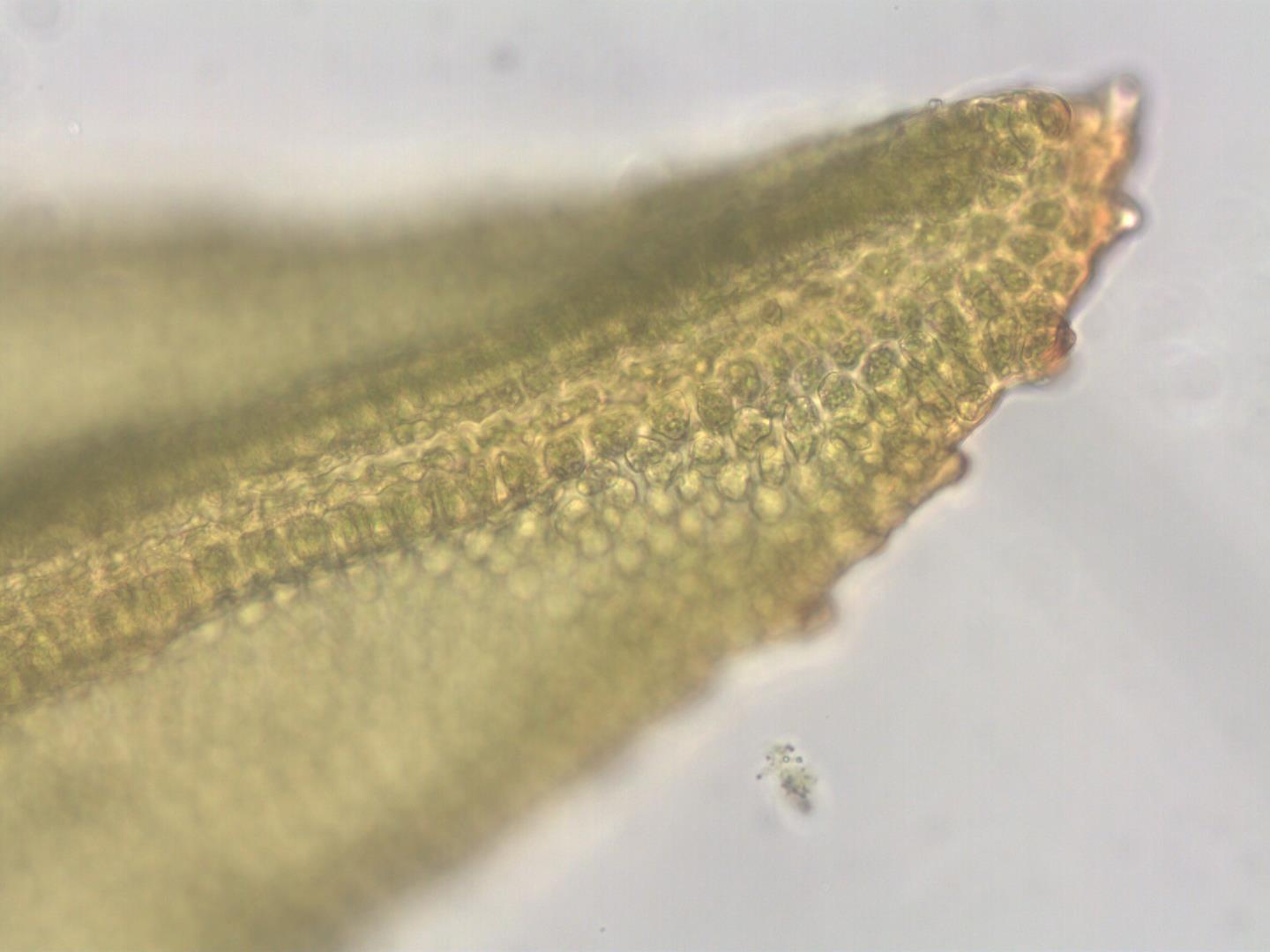
|
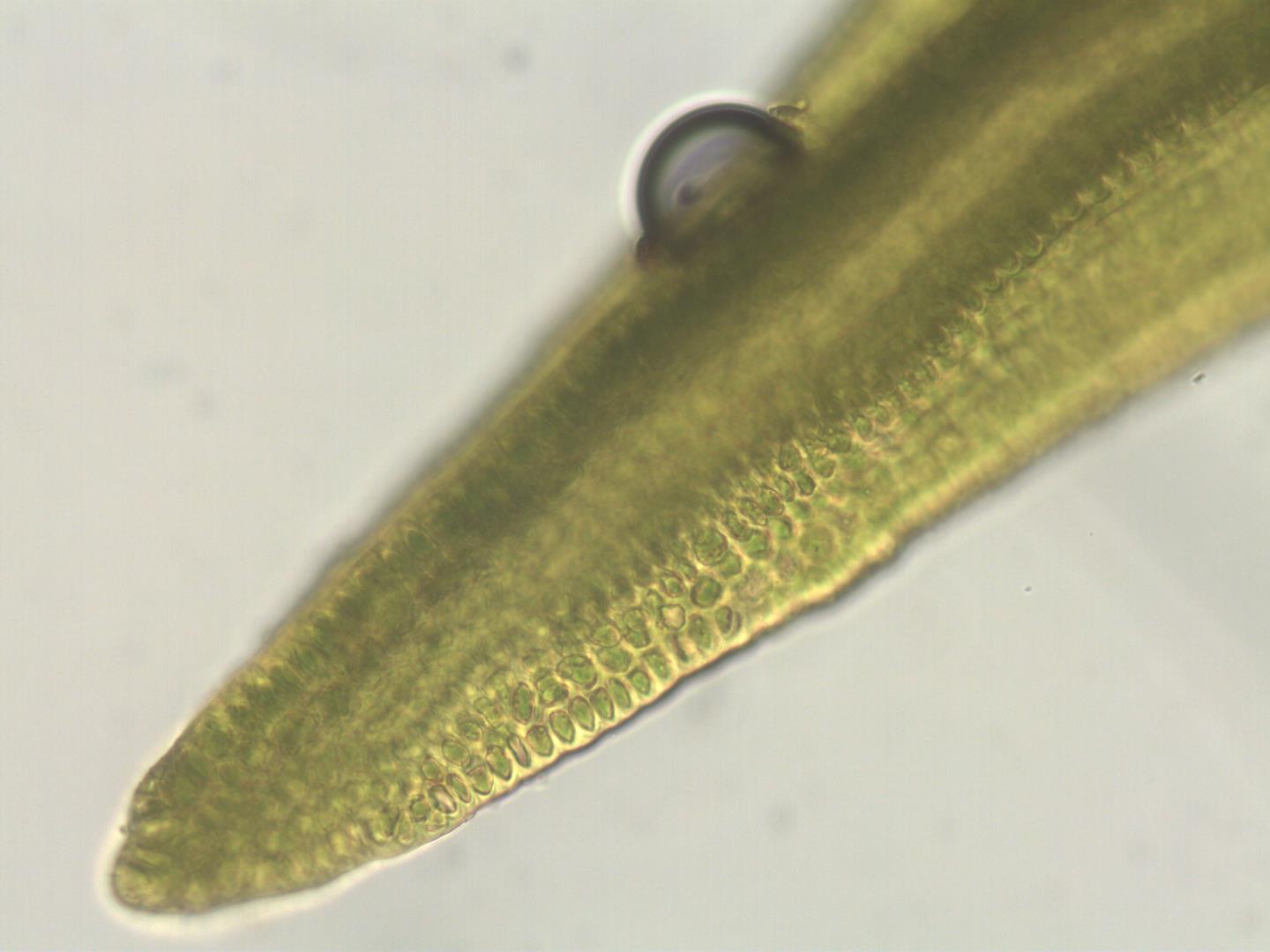
|
| Schistidium rivulare with very distal margin toothed by knobby end-walls (Wilson 5137) | Schistidium squarrosum with entire distal margins (Coleman 1191) |
H. Apical fifth of most leaves ± cylindrical (finger-like); leaves up to 5.0 mm long ..... S. cinclidodonteum H' Apex of leaves ± keeled (with a mid-groove almost to the tip); leaves 2.2-2.8-(3.0) mm long ..... I
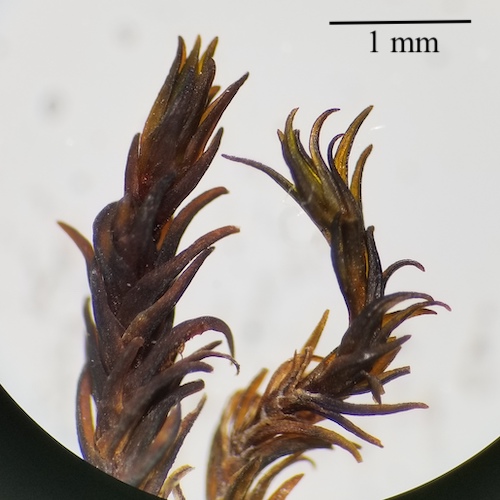
|
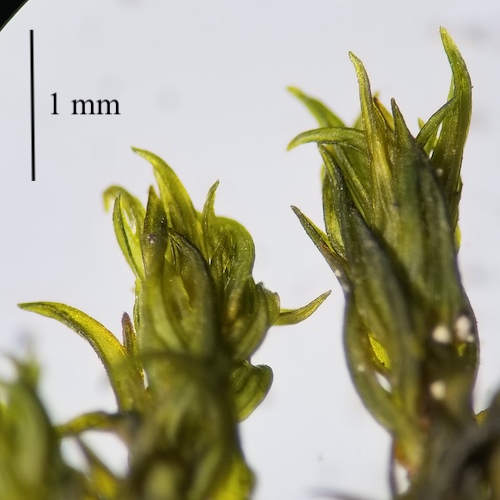
|
| Schistidium cinclidodonteum with terete leaf tips (Coleman 129) | Schistidium squarrosum with keeled leaf tips (Coleman 1191) |
I. Leaves in distal half mostly unistratose .....S. occidentale I' Leaves in distal bistrtose ..... S. squarrosum
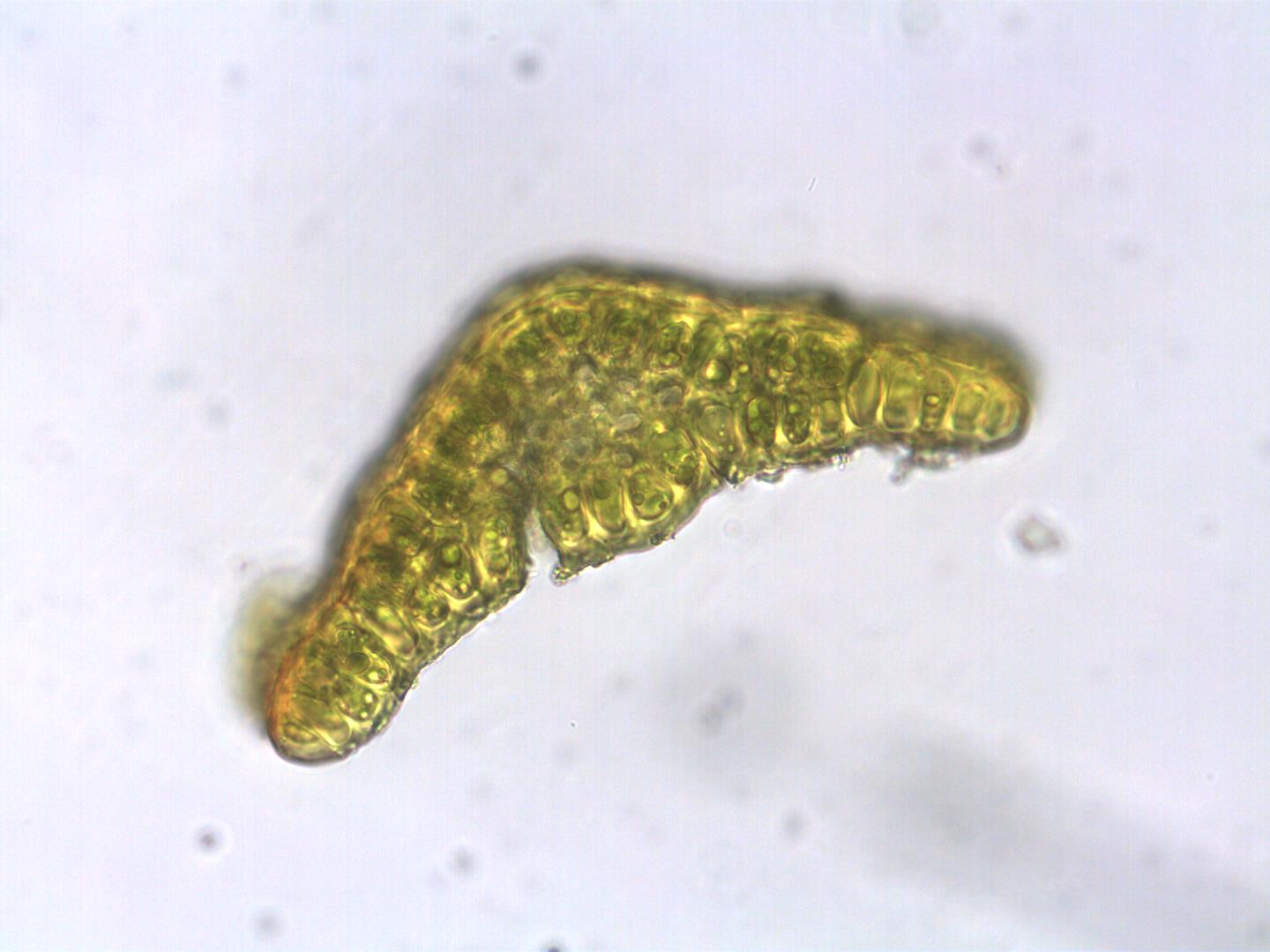
|

|
| Schistidium occidentale Trans cut along distal part of leaf (Shevok 19826) | Schistidium squarrosum Trans cut along distal part of leaf (Wilson 4346) |
J. Leaves with long often flexuous toothed awns; dioicous, sporophytes rare ..... S. tenerum J' Leaves ± lacking a hyaline awn; autoicous, sporophytes common ..... K
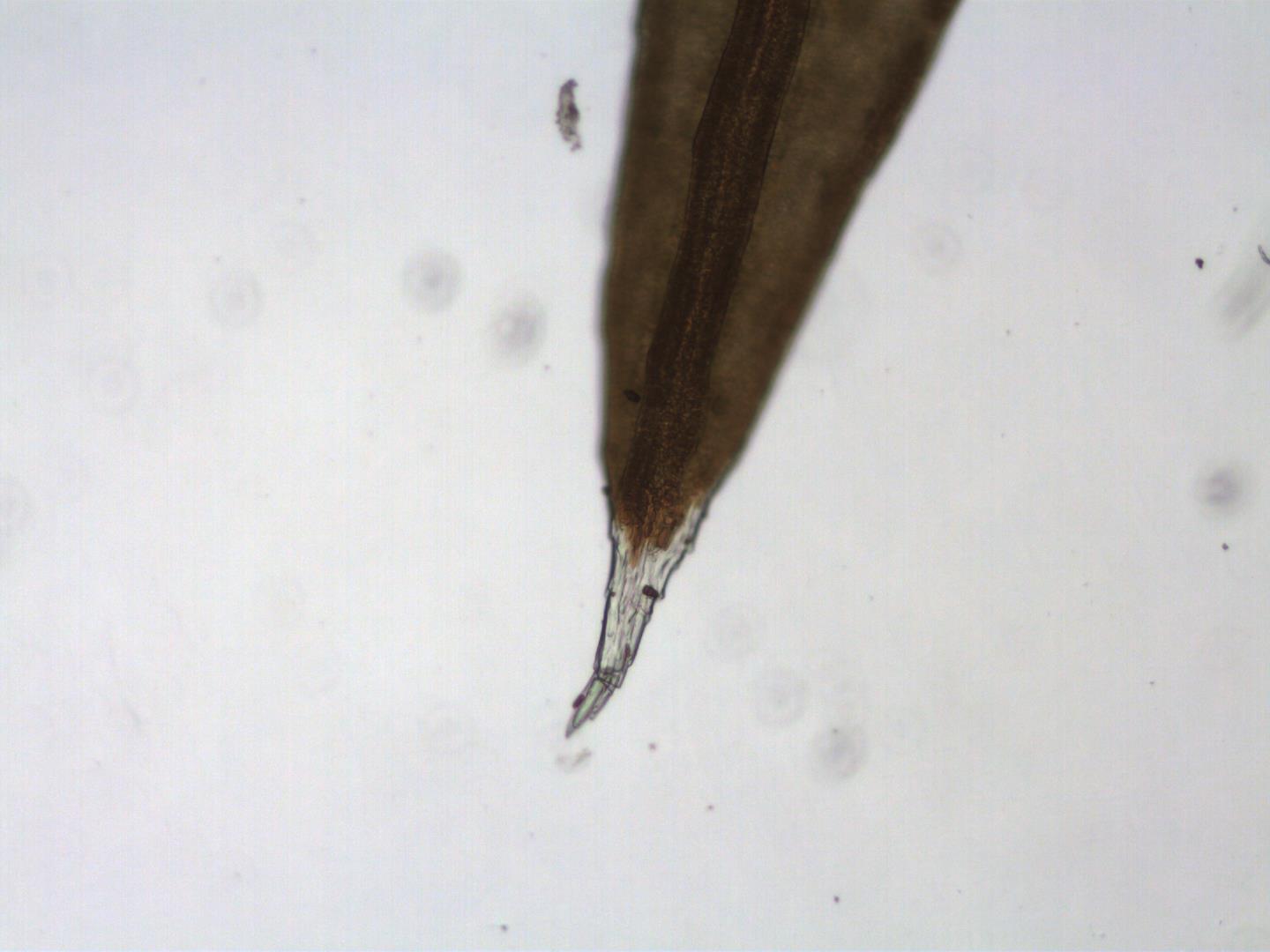
|
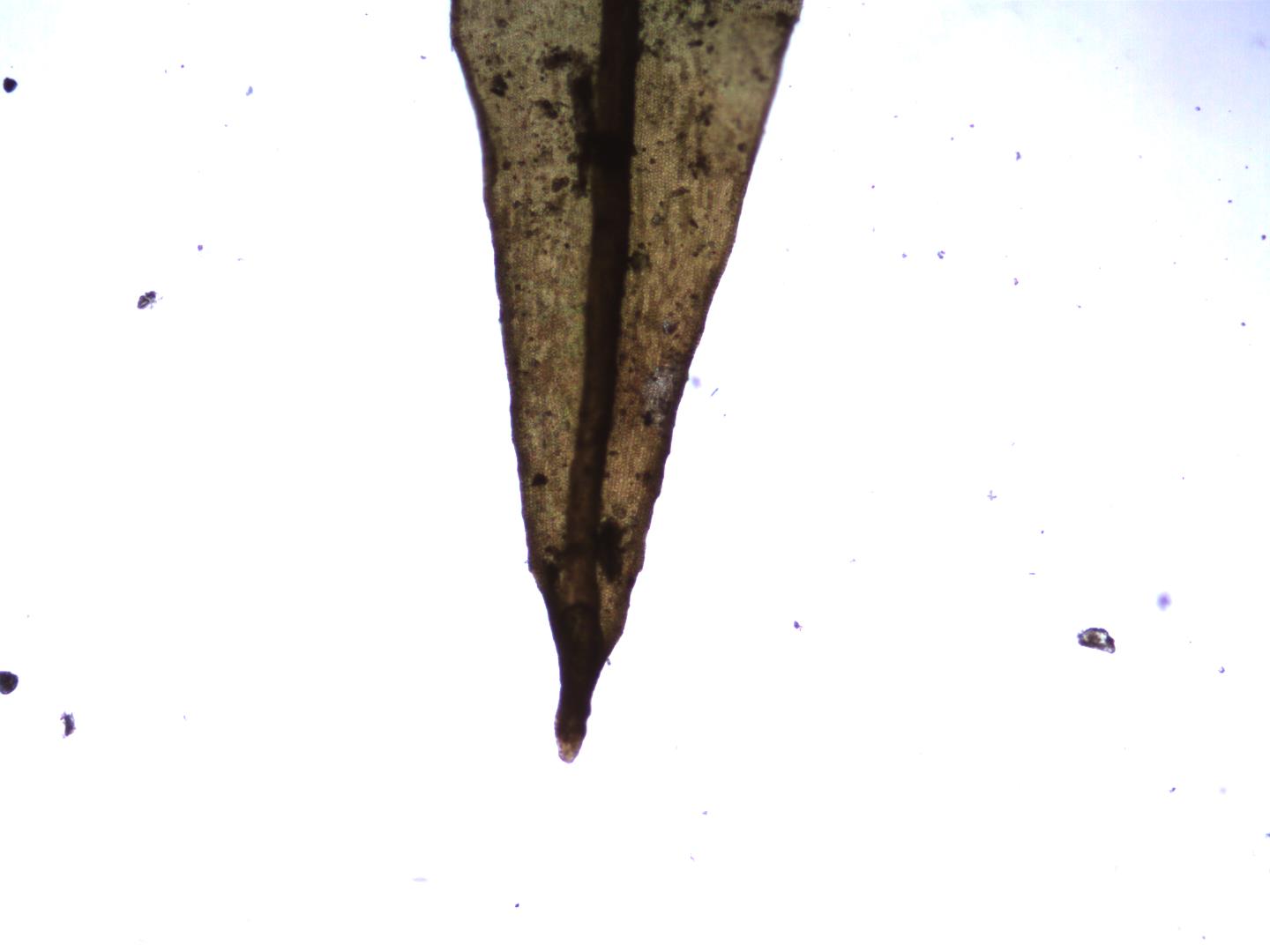
|
| Schistidium tenerum Toothed awn at distal end of leaf (Norris 108344) | Schistidium dupretii No awn on distal part of leaf (Norris 105734) |
K. Leaves long lanceolate ......S. agassizii K'. Leaves short, widest at base ...... L
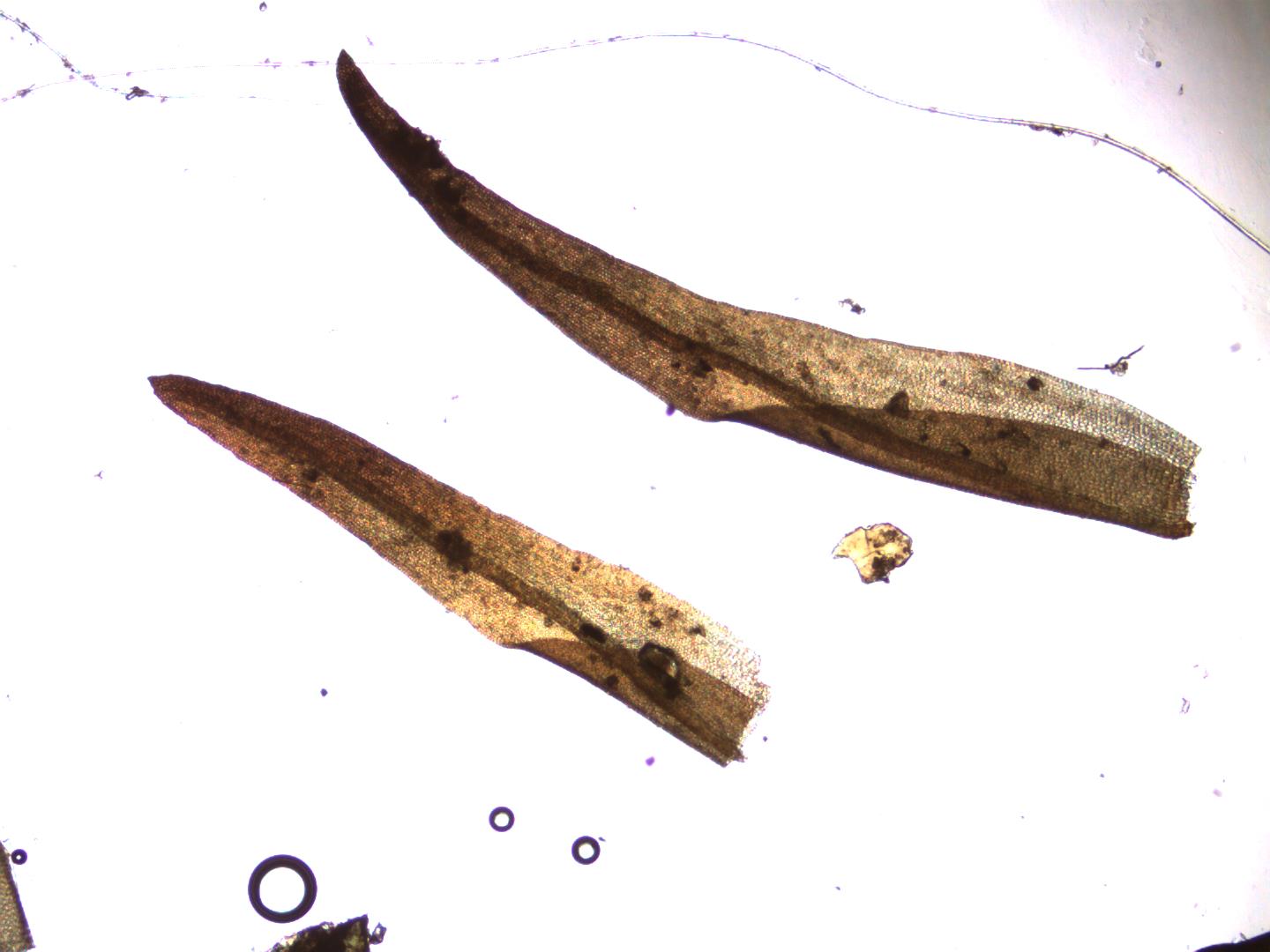
|
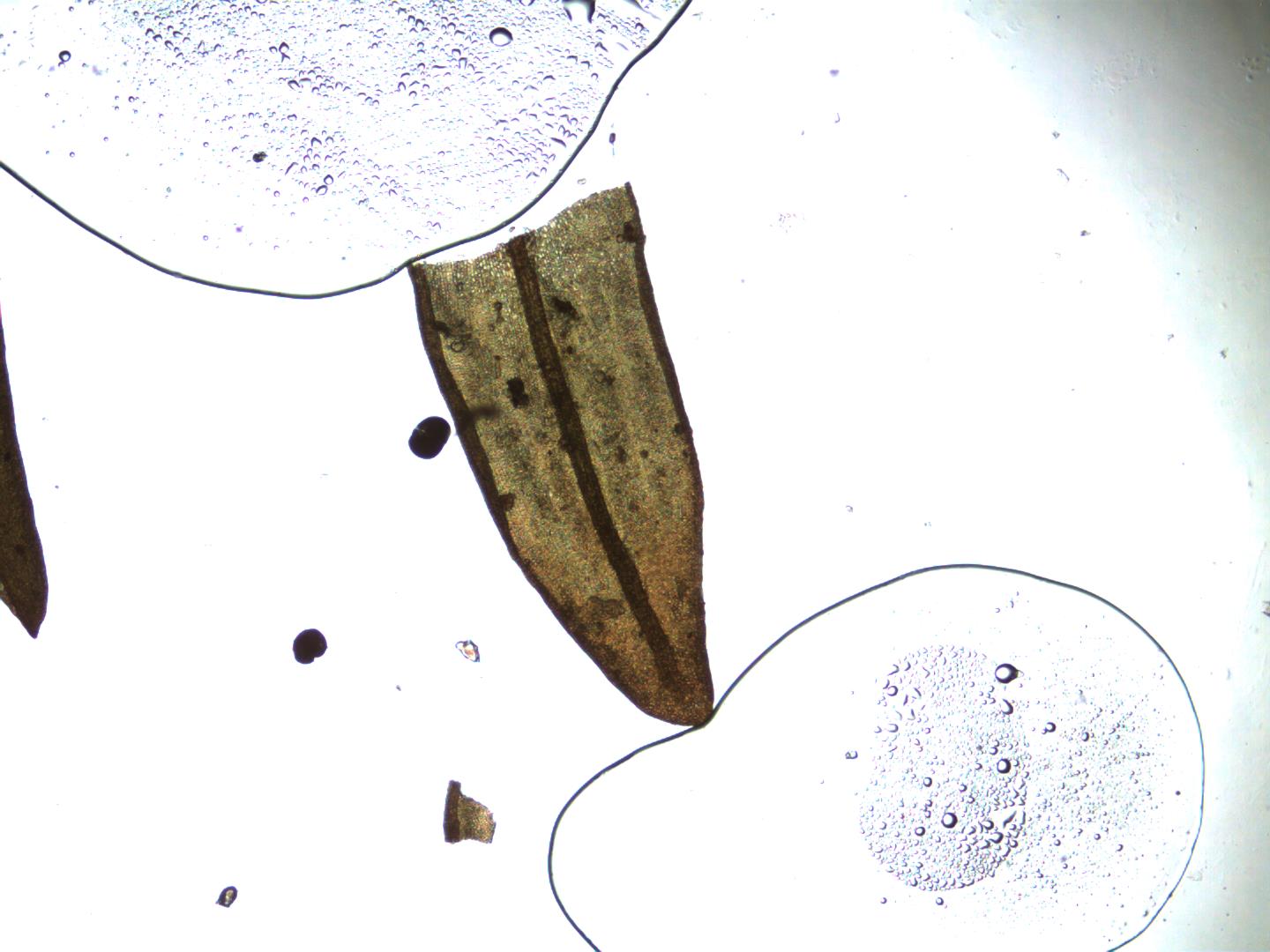
|
| Schistidium agassizii Leaf lanceolate (Wilson 416) | Schistidium dupretii leaf short and widest at base (Wilson 389) |
L. Leaves less than l mm long, not recurved or only minutely so at the base; cells 4-8 µm broad; apex acute .....Schistidium atrichum L. Leaves on well developed stems mostly over l mm long, sometimes 1.5 mm; margins recurved to near the middle; cells 7-10 µm broad; apex obtuse .....Schistidium dupretii
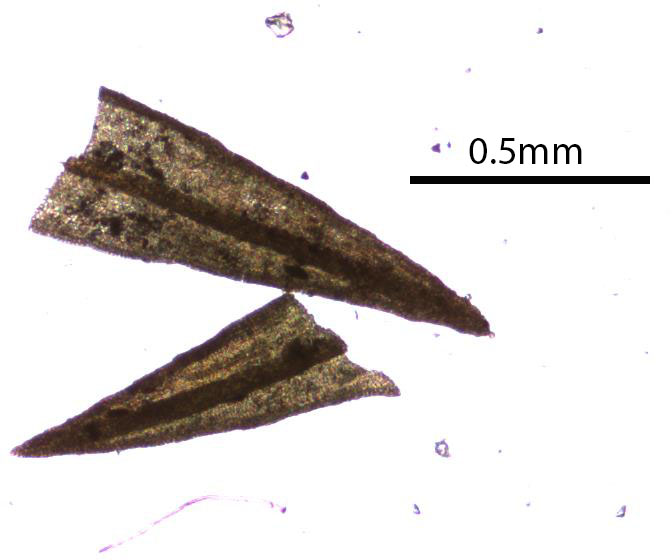
|
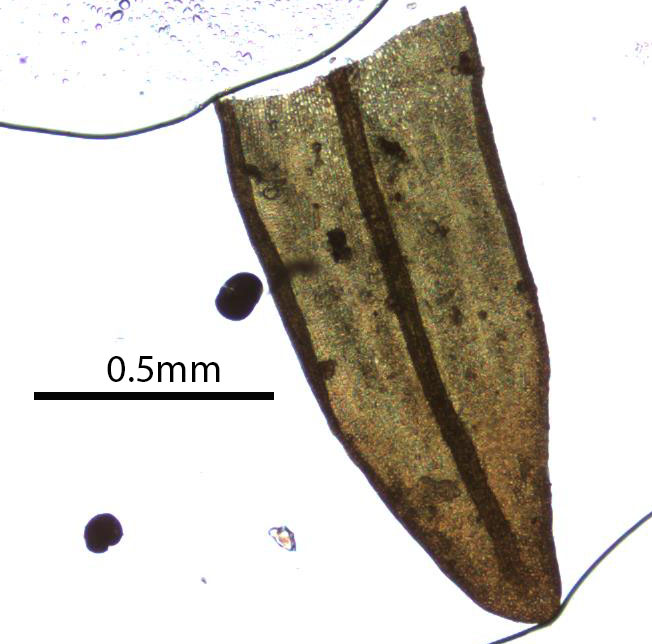
|
| Schistidium atrichum with apex acute (Wilson 1892) | Schistidium dupretii apex obtuse |